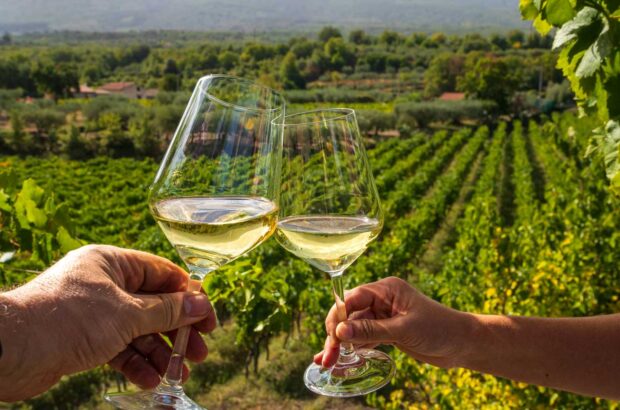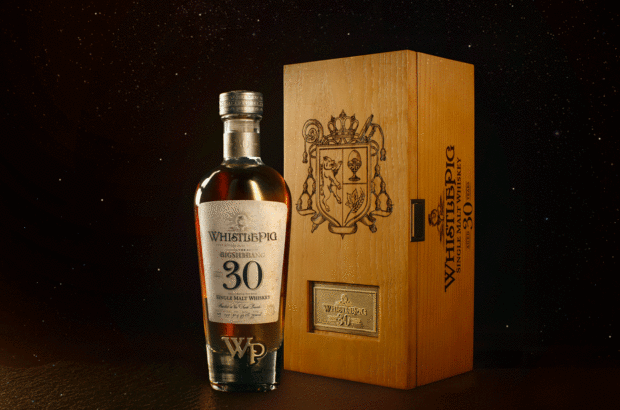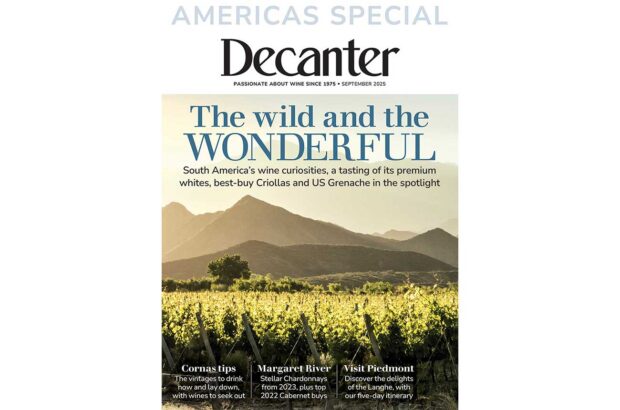Update: Our en primeur verdict on Bordeaux 2018 wines
The Union des Grands Crus de Bordeaux, the group that overseas the 133 châteaux that form the heart of classified Bordeaux, held its annual general meeting in February 2019.
This year marked the handover of the presidency from Olivier Bernard, of Domaine de Chevalier, to Ronan Laborde, of Château Clinet, which meant there was a particularly good turnout of members.
Even without this major event, the AGM is always held at this time of year, and is a good time to take the temperature of the upcoming Bordeaux en primeur campaign.
The wider the smiles, the better the vintage is likely to be. I can still remember the cartwheeling in 2009 and 2010, and the triumphalism over pricing – something that has thankfully been toned down a little now.
I have to confess to being more sceptical than most of the châteaux owners I’ve been speaking to about the upcoming Bordeaux 2018 en primeur tastings.
I know that 2018 was a complicated year, no matter what they are saying today. I remember just how rainy things were through Spring and early Summer, and I saw the devastation of the mildew. It was definitely a year when you needed to work weekends to stay on top of your vineyard.
‘These are likely to be high impact wines.’
But I was also here as things turned hot and dry, and stayed that way right through to the end of October. It was clear during harvest that the grapes coming in to the cellar were clean and fragrant, with extremely low incidence of rot and beautiful looking skins.
Tasting vat samples
And I’ve since tasted some excellent vats of juice, both immediately after harvest and during blending sessions at châteaux.
All of this made the Enosens wine consultancy tasting even more interesting than usual.
A group of 14 consultants overseeing 30,000ha of vines and 1,400 clients across nearly every AOC, the tasting gives an overview of 40 samples, all presented blind, from different appellations at three quality levels – entry, mid and high.
It definitely helped clarify what we’re looking at, particularly when put together with my conversation this week with Axel Marchal, professor at the Institute of Wine and Vine Science (ISVV), as he prepares his annual vintage overview.
It’s still too early to say if 2018 will live up to the hype of course – en primeur doesn’t start for another month. But, taking all of that into account, what should we be looking out for as we approach this vintage?
Bordeaux 2018 weather recap
Let’s keep this quick. Winter was cooler than usual but not much, spring 1.5 degrees warmer than the 10 year average, with a lot of rain falling from January to the end of June, and into early July. Overall, however, 2018 saw more rain than 2015 and 2016, but less than 2017 and under the 30-year average when looking at March to September.
‘August to October were extremely hot, and overall we had the second hottest summer after 2003, but there was very little blocking of ripening because of the rain in early season, except for young vines and extremely dry soils,’ said Martin Lasserre, of Union Régionale Agricole Bordelaise.
‘Budding was late but prolific, possibly because the vines were compensating after the frost of 2017.
Colour change on the other hand came two day earlier than average because the drought was fully installed by August, and harvest was near perfect. The conditions overall meant lots of concentration, high sugars, and very little rot. Most winemakers brought in small berries with thick skins, full of anthocyanins’.
Expect big bold wines, high tannic content
All of the above means these are likely to be high impact wines. Patrick Meynard, owner of Châteaux Lalaudey and Pomeys in Moulis-Médoc, said 2018 will deliver the most structured wines since 2010, and expects ‘a vintage marked by climate more than terroir’.
Having said that, it’s always impossible to discount the impact of soils entirely. Both rain and drought can be challenging to certain soil types.
Almost certainly the worst affected by the drought will be sands, because sand can exacerbate drainage, and heat. Therefore the berries on these types of soil are most likely to be shriveled, and to have extremely high pH levels, which means low acidity. The weather pattern means clear similarities to 2016 on paper – a rainy start to the vintage, a drought-like finish. But in terms of how the grapes reacted and behaved, the two years are quite different.
‘For a start, the drought came later in 2018,’ says Marchal, pointing out that early July saw less rain in 2016. ‘But when it came in 2018, it was more abrupt, with the green growth stopping across the whole region at pretty much the same time’. He sees it closer to 2009, but with more density to the fruit.
… and high alcohols
There was some disconnect this year between technical and phenolic maturity, greater in reds than in whites, so look out for high alcohols as a result. The hot summer meant that pyrazine was easily burnt away, so we should find very few green notes.
Alcohols will be highest on cooler soils that needed a long time to ripen, so the Côtes, the Satellites and the cooler parts of St-Emilion have alcohols at 14.5-15%abv and more. I heard of one Cabernet Franc coming in at 16.5%abv, but that is an exception. In earlier-ripening areas, such as Pessac-Léognan and Pomerol, alcohols are likely to be more balanced at 13.5% or 14%abv, as they will have reached full phenolic ripeness earlier.
‘Pessac-Léognan did the best perhaps because it’s an early ripening site,’ said Marie-Laurence Porte of Enosens, ‘so they were able to get grapes in before over-concentration. If you had to wait for phenolic ripeness, that is where things could get difficult’.
The final averages per grape, according to Fabien Faget of Enosens, are Sauvignon Blanc 13.5%abv, Sémillon 12.5%abv, Merlot 14.5%abv, and Cabernet Sauvignon 14%abv’.
It’s not Left or Right Bank
It seems that there is great quality fruit across both the Right and Left Bank. Where 2015 was pretty clearly a Merlot vintage, and 2016 pretty clearly a Cabernet Sauvignon one, 2018 is less clear cut. Merlots in the Médoc are approaching typical Cabernet Sauvignon territory in terms of their density and structure, said Axel Marchal, professor at the Institute of Wine and Vine Science (ISVV).
Despite downy mildew, most yields were pretty good
‘The story of 2018 was the mildew, the speed and the quantity of it,’ said Martin Lasserre, of Union Régionale Agricole Bordelaise.
It meant a big loss of yields in certain sectors, and yet those who avoided issues with mildew saw a big crop. The swings can be seen through the yields of Cru Bourgeois in the Médoc, which ranged from 15hl to 65hl. The impact on organic and biodynamic estates has been well documented, with Pontet Canet and Palmer at yields of around 12h/h. The organic Château Rocheyron in St Emilion, also biodynamic, came in at 28hl/hl.
‘We had 56 attacks of mildew this year compared to 30 in 2007 or 10 in a normal vintage,’ said Peter Sisseck, owner of Rocheyron. ‘We worked hard to stimulate the natural defences of the plant, and ended up with reasonable yields, but there is a lot still to learn about how to control the vines’ response to the threat’.
Even for those affected, there was comfort in the fact that downy mildew affects quantity but not quality. Frederic Engerer at Château Latour (where yields were 24hl/h, not too far below their average of 35hl/h) pointed out in December, ‘Mildew dries the berries and so is visible to the eye. This means it can be dealt with through sorting in the vineyard and cellar’.
This means, by the way, that machine harvesting is not a problem with mildew in the way that it is with rot, because the dried berries are easier to discard, so those with lower budgets are less penalised. If the affected grapes are not taken out, the flavours that are transmitted are not those associated with rot, but rather dried out fruits, dried leaf, so you might encounter a few of those.
Despite all this, and the hail that affected parts of the southern Médoc, plus Bourg and Blaye, the overall yield for 2018 is expected to be 5.7million hl, pretty much spot-on the 10 year average. Even in early September many thought it would be higher, but over-concentration from the continued sunshine through September and October reduced it further, by an estimated 10%.
Long harvest window means big style differences
‘I never put my boots on once to harvest this year,’ Marie-Laurence Porte of Enosens told me, ‘as conditions were so good’. This was one of the most spread out, relaxed harvests in living memory, with the red grapes coming in from early September right through to late October – and Sauternes going even later still.
That is good news for quality potential, as most grapes will have had the time to get fully mature before picking. But it also means that you will see stylistic choices coming in to play, particularly as the last few years have seen a few serious changes in style. Troplong Mondot, for example, began picking extremely early – 7 September – on certain selected plots, leading us to assume that the rewriting of its stylistic signature will continue. Beauséjour-Bécot has similarly brought its harvest date forward from where it was traditionally (and started using amphoras for some fermentations, to focus on the pure fruit flavours of the vintage).
‘Ten years ago, people were signalling how late they were picking,’ says Marchal, ‘whereas today it’s the opposite’.
Fermentations were not always easy
Mid September saw a rapid concentration of sugar and a drop in malic acid, with some shriveling of grapes, which will impact the aromatics, and some estates will have adjusted their acidity levels in the cellar to correct taste. High sugars and high pH levels always mean potential issues with stuck fermentations, and this year there were a number of vats that had trouble fermenting completely dry.
Porte said, ‘If grapes were picked late at high concentration levels, we think the type of sugar changed in the grapes, and this impacted the yeasts. I saw some pH levels at 3.8 or 4, even 4.2, so the technical teams needed to be careful’. Marchal agrees with this assessment in certain spots, but points out that overall pH levels were nowhere near as high as in 2003, and the majority of wines should display great balance.
Malbec and Petit Verdot did well, Carmenère less so
A very good year for Malbec and we might see high percentages in those that are able to use it. Petit Verdot and Carmenère were more complicated, both being thirsty grapes that like a more regular supply of water, and suffer more from drought.
Whites and stickies
Levels of malic acid were relatively normal in the dry whites, even if they were low in the reds. Generally the aromatics are good, even if some have high alcohols with perceptible heat.
We can expect lots of fruit, great concentration, with exotic fruits, mango, passion fruit and pear character. Sauternes had an extremely late harvest because of late-onset botrytis, but when it came it happened fast. The resulting sweet wines should be luscious, but look out for low acidities.







